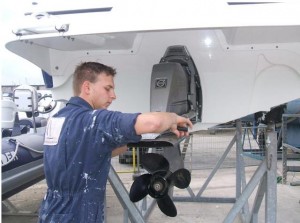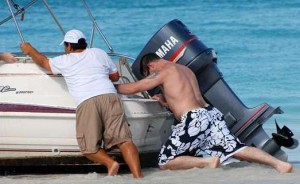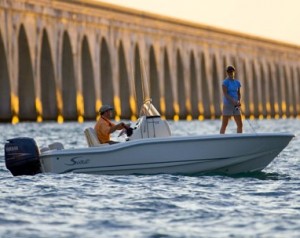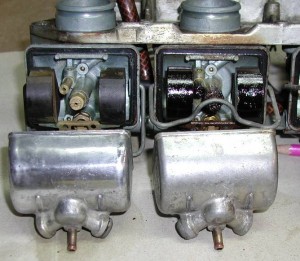Snowmobile Tune-up II: Visual Inspection
 Today we pick up right where we left off in our preseason snowmobile maintenance process: the visual inspection. Having checked for cracks in the hood, we now turn our attention to the upholstery. Seat covers may become nicked and scratched with use, and in some cases they might slip right off the mounting. These details might seem trivial or superficial, and it’s true that your snow machine can operate no matter the state of the seating. Now is a good time to shore up any aesthetic flaws, however. Try gluing a similar fabric underneath hole in the leather or synthetic seating.
Today we pick up right where we left off in our preseason snowmobile maintenance process: the visual inspection. Having checked for cracks in the hood, we now turn our attention to the upholstery. Seat covers may become nicked and scratched with use, and in some cases they might slip right off the mounting. These details might seem trivial or superficial, and it’s true that your snow machine can operate no matter the state of the seating. Now is a good time to shore up any aesthetic flaws, however. Try gluing a similar fabric underneath hole in the leather or synthetic seating.
Now it’s time to get a look at the underbody of your snowmobile – specifically, the track and the rear suspension. Check for bent or broken suspension parts and ensure that the sliders haven’t deteriorated. When inspecting the track, think about it the same way you would the tires on a car. The slightest sign of wear is more than enough evidence in favor of replacement. Driving with a worn track is basically tempting fate; you could end up walking several miles back to civilization through deep snow.
Tip the sled onto its side to get a glance at the skis and runners. Again, you simply have to check these parts for serious signs of wear. Steel skis should last you many years provided they aren’t bent or allowed to corrode. Plastic skis could be cut or otherwise impacted rather easily, so check them with added prejudice. If you haven’t already done so, top off the engine with Yamalube 2s oil. Tomorrow we’ll go under the hood!



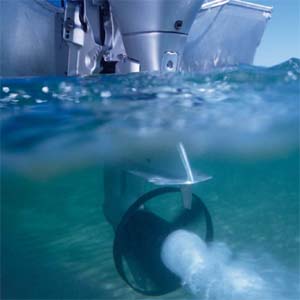 Yesterday we discussed the virtues of purchasing the proper propeller for one’s small boat. I received some correspondence from some longtime readers requesting specifics. The most common questions had to do with the “pitch” of the propeller and what that might mean for engine efficiency. So, thanks to popular demand, let’s take a closer look at that undervalued part that cuts through the water with authority.
Yesterday we discussed the virtues of purchasing the proper propeller for one’s small boat. I received some correspondence from some longtime readers requesting specifics. The most common questions had to do with the “pitch” of the propeller and what that might mean for engine efficiency. So, thanks to popular demand, let’s take a closer look at that undervalued part that cuts through the water with authority.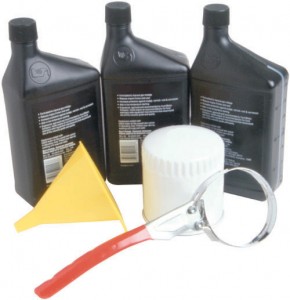 With a vast array of products available for your boat and WaveRunner, it can be difficult to decide what products are right for you. If you are unfamiliar with purchasing oil and other products, stick with manufacturer and name brands until you are more familiar with product specifications. Products, such as
With a vast array of products available for your boat and WaveRunner, it can be difficult to decide what products are right for you. If you are unfamiliar with purchasing oil and other products, stick with manufacturer and name brands until you are more familiar with product specifications. Products, such as 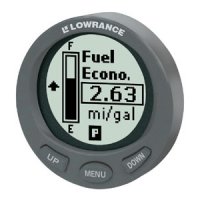 Earlier this week, we provided a few simple suggestions to aid boat owners in a financial pickle. It’s amazing to consider how much money the average boater could save by just cutting down slightly on fuel costs. Recognizing that not everyone has the resources or the patience to conduct thorough tests to find a boat’s “sweet spot,” it’s time to highlight a technological innovation that does the job for you.
Earlier this week, we provided a few simple suggestions to aid boat owners in a financial pickle. It’s amazing to consider how much money the average boater could save by just cutting down slightly on fuel costs. Recognizing that not everyone has the resources or the patience to conduct thorough tests to find a boat’s “sweet spot,” it’s time to highlight a technological innovation that does the job for you.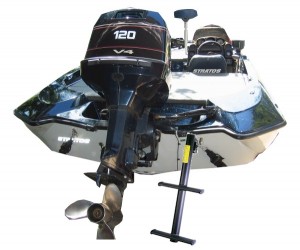
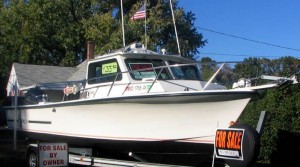
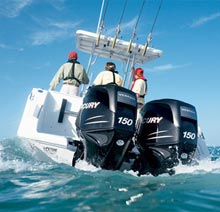 Today’s boaters could be forgiven for putting the past out of mind. As recently as the 1990s, federal rules for outboard engine efficiency were much less stringent – to the point that pollution became a problem and the small boating industry became something of a scapegoat for environmental groups. Around 1996, the marine industry and the Environmental Protection Agency teamed up to create and enforce fuel standards.
Today’s boaters could be forgiven for putting the past out of mind. As recently as the 1990s, federal rules for outboard engine efficiency were much less stringent – to the point that pollution became a problem and the small boating industry became something of a scapegoat for environmental groups. Around 1996, the marine industry and the Environmental Protection Agency teamed up to create and enforce fuel standards.